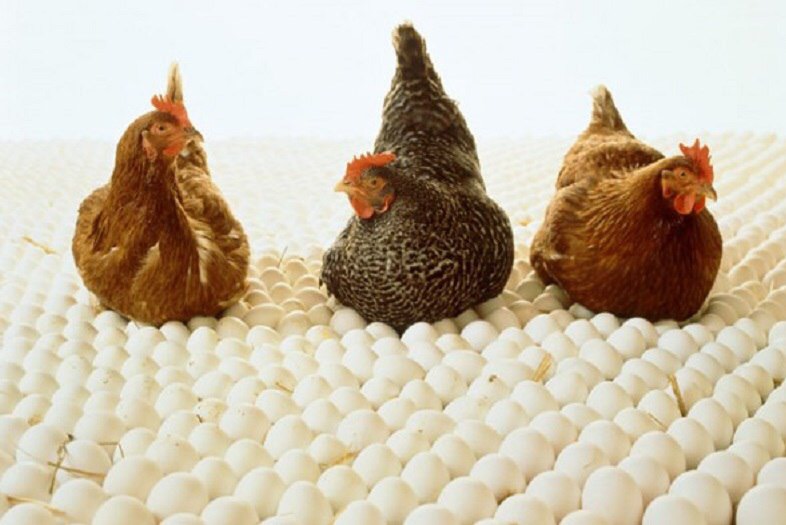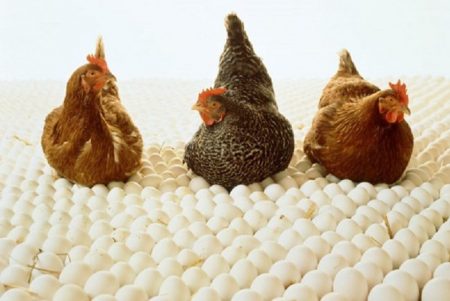
Household owners who raise chickens for eggs need to purchase breeds with high egg production. This is not so simple, as farm birds, like garden crops, can only develop in a specific climate. For example, not every individual will be carried in Siberian conditions. Find out which crosses are most profitable to breed.
Content
Characteristics of egg laying chickens
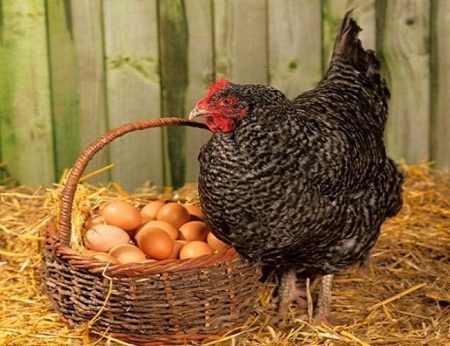
When choosing a quality breed of laying hens, you need to consider that most of them are not suitable for meat. Birds of both sexes are lightweight, and they begin to mature early. Females begin to lay eggs from 4 months. In "meat" hens, this happens from 7 months.
When breeding laying hens, specialists do not look at the volume and quality of meat, taking into account only egg indicators.
You can call a breed an egg laying if:
- The weight of the cockerel is within 3 kg, and the hens are from 2 to 2.2 kg.
- The birds are restless. They are very active and agile.
- Chickens have a high appetite because they need constant feeding. Normally they produce 1 egg in 25 hours. To restore the expended energy and calories, the female needs food.
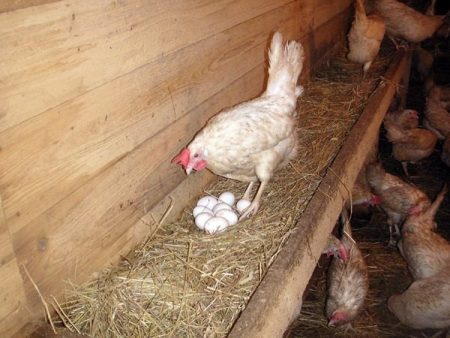
The egg production of any chicken is directly related to the number of eggs. This property manifests itself in the chicken and does not change until the end of the bird's life. Egg-laying females can have up to 4 thousand eggs, this is a variant of the norm. But it does not follow from this that one individual can lay so many eggs. After all, a laid egg can be fully realized in 15 years, and most birds do not live so much and are not kept on the farm.
The peak egg production of all varieties occurs in 3-4 years of life. After this, females become less productive, so they are rejected in factories.
On average, industrial egg laying hens should produce 220 eggs per year. But there are also records. For example, a female of the Leggorn breed produced 361 eggs.
Best egg breeds
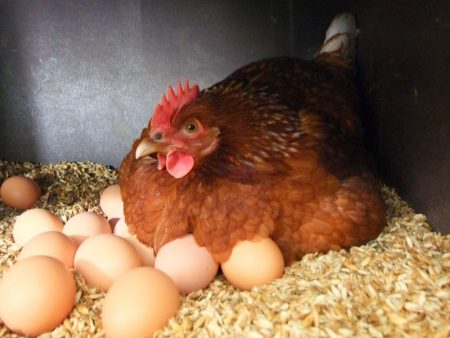
It must be borne in mind that the level of eggs obtained depends on the conditions of breeding chickens and the professionalism of the owners. First of all, birds are affected by climatic conditions. For example, not every individual will be carried in the Urals or in the Moscow region. But there are chickens created specifically for breeding in the household.
Loman Brown
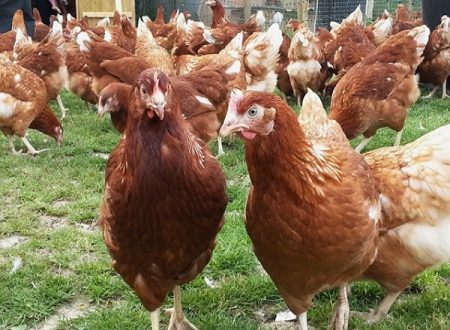
Chicken can produce 300 eggs per year. Typically, in a private economy, their number is limited to 280 pieces. An egg weighs 60 grams. This is one of the fastest rushing hens. The first egg is obtained on the 134th day of the individual's life. It becomes completely egg-laying on the 180th day.
But this breed has a negative trait. The female can lay eggs only for 80 weeks, while other species - 140 days longer. After this time, the ability to lay eggs is greatly reduced. In the future, it is unprofitable to keep such a bird in the factory, so the old livestock is rejected.
Breeding a breed is not difficult. The chicken is unpretentious to temperature conditions and nutrition. The fact that birds are in cages does not reduce egg production.
Russian white
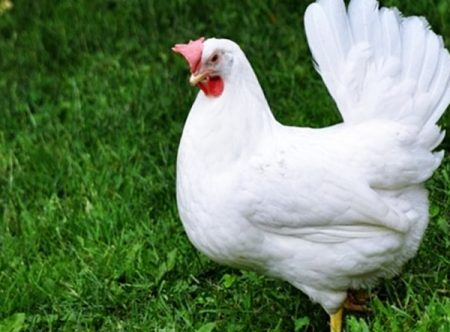
The name shows that this cross is the most adapted to domestic conditions. Hens are calm and active.
Medium-sized birds have white plumage and a large crest inclined to one side. A chicken produces 285 eggs weighing 65 grams per year.
It is advisable to breed “Russian White” in the Moscow Region and other cool areas, since she does not need special conditions of detention. Young growth survives 95%. The bird is not susceptible to chicken diseases.Outwardly, it is very similar to the Leggorn breed. The mass of the female is 1.8 kg., The male is 2.2 kg.
For chicken, the quality of food is very important. If you do not feed with minerals, egg production may decrease.
Leggorn
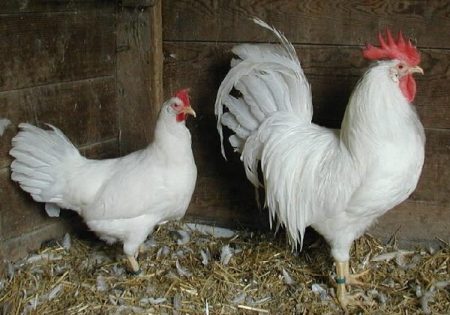
The Leggors appeared in Italy. Russian specialists worked for several years to improve the productivity of poultry, but the result has not changed. Crossing is still ongoing, but even in its original form, the breed is common in many countries. It is grown on poultry farms, in household plots and on pedigree farms.
The breed was created during a multi-stage selection. That is why she has excellent egg production. Today, chicken is popular in foreign and domestic farms.
The breed includes different subspecies, but the most popular of them with a white color. A chicken carries up to 300 eggs with a weight of 58 g per year.
Females begin to rush at the age of 4-4.5 months, but full physiological maturity occurs at 5 months.
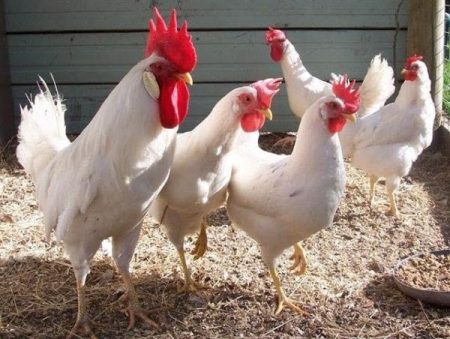
The weight of the chicken is 1.6 kg., And the rooster - 2.6. The maximum female productivity is achieved in the first year of life. Then this indicator decreases. At industrial enterprises, such individuals are rejected.
For "Leghorn" is characterized by such external signs:
- a triangular shape of the body with an apex on the head, as in all traditional breeds;
- slightly elongated and toned body with a convex and developed chest;
- a small head with a voluminous leaf-like crest (in roosters, the crest is drooping, in hens - standing);
- long slightly curved neck, developed wings and tail;
- dense feathers, usually white, but also fawn, blue and speckled.
The price of a young individual depends on its age. Monthly hens and males cost about 250 p. a piece. At 4-5 months, they will have to pay 500 r. Hatching eggs are sold at 30-40 rubles apiece, depending on the place of sale.
During the breeding, the instinct of incubation disappeared from the breed.
It is believed that it is best to contain chickens in the cells. They need limited space with good lighting. The breed is beneficial to grow, because it takes a little feed. The bird consumes as much food as its body requires, but not more. But there is one condition: the diet must contain mineral components, and drinking water in the drinkers must be clean.
Adler silver
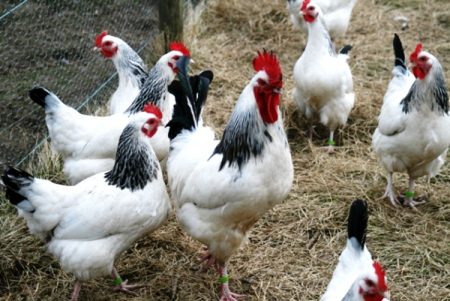
The name is given to this breed in accordance with the city where it appeared. It is considered both egg and meat.
Individuals are characterized by a rare and smooth plumage, so they feel great at a temperature of 37-40 degrees Celsius. No wonder the breed is so popular in the south.
Since the breeding, the chickens have adapted to different climates, which is why they are bred in all regions of the former USSR. However, the bird lays eggs only in conditions comfortable for her. She needs a walk, and it's not just about free space. Chickens themselves produce protein feed.
Under good breeding conditions, the female gives 281 eggs weighing 61 g. Her productivity is 3-4 years. So the period of keeping the bird has grown.
Hayex White
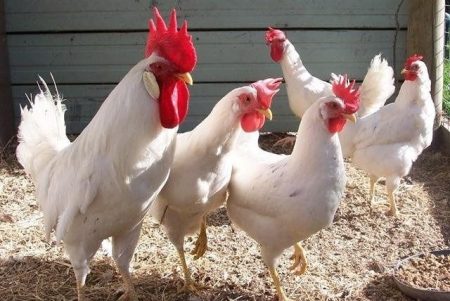
Poultry farmers did not disregard this breed. It is well adapted to frosts and various diets, not prone to infections and fungi.
These hens were bred in 1970 by Dutch breeders. The Leggorns were taken as a basis, therefore, in appearance, these rocks are not much different. But from the relatives of "Hayeks" distinguishes not so elongated body.
Plumage of hens is white and silky.
Hayex Brown
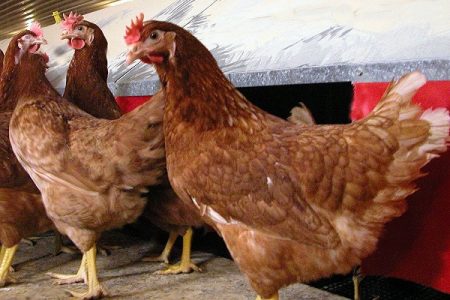
This is a Leggorn breed hybrid, so named because of its brown color. Like the white brothers, these Hayeks are unpretentious.
Female individuals are distinguished by a massive physique. The weight of the female is 2.2 kg., The male is 2.6.
Although the laying time of a chicken lasts only 80 weeks, it can lay 360 eggs. In factories and with simple home care, eggs can weigh 63-71 g. Due to these qualities, the breed is so popular.
The price of young laying hens is from 220 to 350 rubles, hatching eggs, depending on the terrain, 25-30 rubles.
The eggs of the breed contain a minimum of cholesterol. Due to this feature, the demand for the product has grown.
Tetra
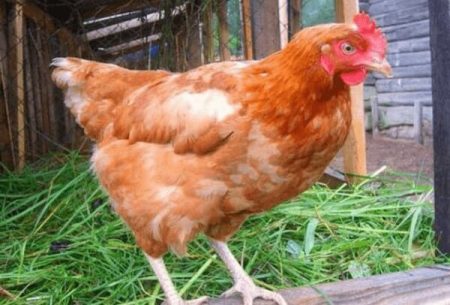
These hens became famous for their high and early performance. They are ideal for home breeding. Due to its large weight and active growth, the breed is suitable even for meat.
Birds have a horizontal body and strong dark or light feathers.
Females rush from the 17th week. Daily chickens are not difficult to divide into males and chickens, because they have different color feathers. A female gives 220 brown eggs a year, which weigh 61 g. A day, she consumes 125 g of special food.
This breed is produced and grown by private farms and small farms. The cost of an adult is 1500-3000 p., Chicken - 100-200 p., Eggs - 50-70 p.
Isa Brown
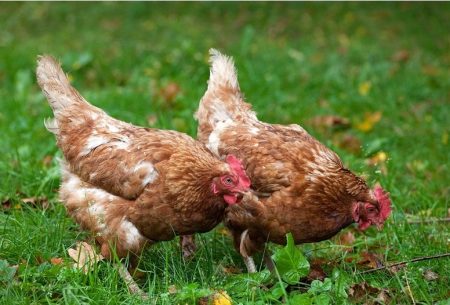
The breed, bred by French breeders, is well adapted to Russian conditions.
In appearance, the female is a classic laying hen. This is a small chicken with light brown feathers. It features a miniature head, weakly pronounced crest. Its beak is pink and beige, and its legs are yellow. Chickens not to be confused with males. The former have a dark brown color, the latter is light yellow. There is a subspecies with white plumage, which was called "Isa White".
A chicken gives 320 brown eggs per year. Egg production starts from 135 days of life. The mass of large eggs reaches 63 g.
The bird can be kept in a cage, spending 110 g of feed per day for 1 individual. But much more useful for individuals walking. Layers need daylight hours of 14-15 hours.
High line
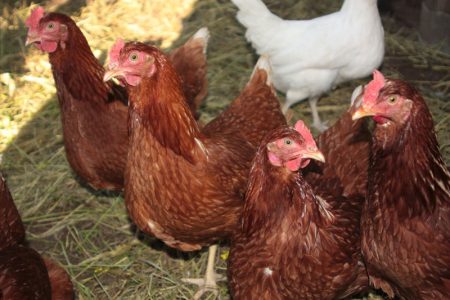
The breed was created in the USA. The bird is not capricious, it is distinguished by endurance.
Feathers come in white and brown. The female weighs about 2 kg. and matures within 170-180 days.
Females are very calm and well adapted to the conditions in which they are kept. Moreover, external factors do not affect the quantity and quality of eggs. From 8 weeks old, a female can produce 350 large eggs weighing 62-65 years. with a strong shell.
The breed is appreciated for the high quality of eggs and the use of feed in small volumes. Belongs to the leaders of cost-effective chickens.
Andalusian blue
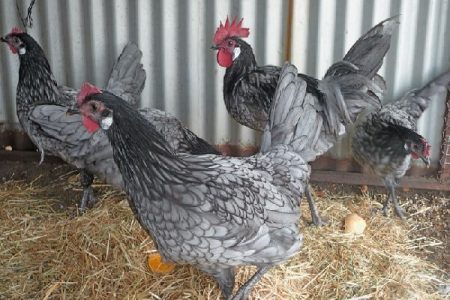
Breeders of birds choose it for its unusual feather color and high productivity.
The breed was created in Spain by crossing the fighting Blue and Minorca. It features an elongated body, a wide head and a convex forehead. The crest in birds is voluminous, in roosters - oblique, in hens - erect.
The plumage of adults is colored blue, the beak and legs are gray-blue, and the earlobes are white and the “face” is red. Among hatched chicks, 25% are gray, 25% are black and 50% are blue. The first ones are not rejected, because when they cross they produce blue chickens. This bird is very beautiful.
Hens differ in average egg production - from 160 to 180 eggs per year. The breed is common in private households and is not grown in factories. The mass of the male is 2.5 kg., The female is 2.2 kg. Eggs with white shells are medium in size.
An original and rare hen in our latitudes costs about 1,500 p. A piece. The price of chickens is 300-350 rubles, and hatching eggs - 200 rubles.
Minorca
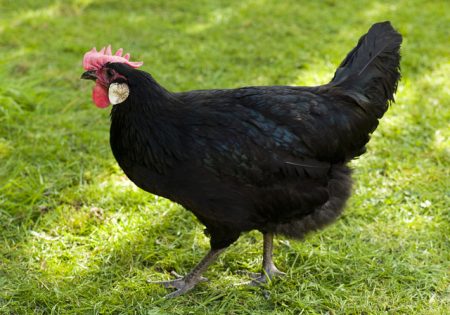
The bird gives not only high-quality eggs, but also juicy meat. The breed was created in Spain and named after the island where it was bred. The main view was developed by English breeders, but there are still German and American lines.
Hens have a slender physique, long back and neck. The head is decorated with a voluminous leaf-like crest obtained during selection. The purity of the rock can be determined precisely by the appearance of the ridge. The bird looks stately due to the dark beak, white earlobes and earrings. Feathers are usually dark: black to gray, “face” red.
Minor eggs are large, up to 80 g in adults, up to 65 g in young animals. In the first year of life, the individual gives 180 eggs, in the second - 140. The British chickens weigh 2.5 kg., And the rooster - up to 4.
Minors are expensive birds because they are considered decorative and are usually bred by fans of exotic breeds. An adult stands on average 1700-2000 p., And a dozen eggs - about 1000 p.
Dominant
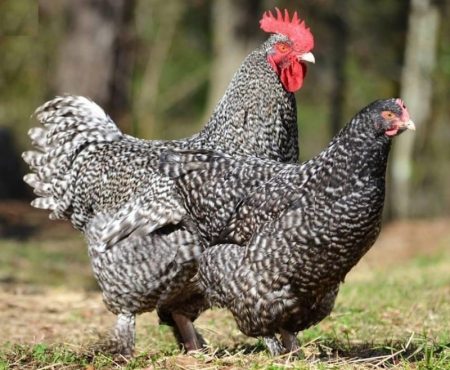
Highly productive breed for the production of eggs and meat. It has long gained popularity in private and farmland.
The bird is large, has a clear outline and an original color. Cross includes 12 varieties, depending on the color of the feathers. Sussexes are often found in Russia - black and blue. On average, Dominant lays 300 eggs per year. The weight of an adult chicken is 2.5 kg., Rooster - 2.8 kg.
Individuals of this breed are most often sold directly by the owners, at exhibitions or special breeding farms. The price of an egg is 30-40 p., Young chickens at 4 months - 550 p., Chicks - 300-450 p.
New hampshire
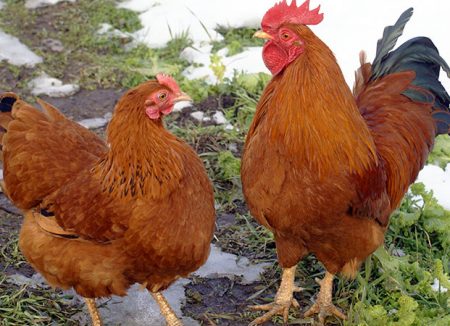
Cross was created in the United States based on the Rhode Islands. This bird consumes a minimum of feed at high productivity. It is considered an egg-meat species. It gives approximately 270 eggs per year. Not capricious, has a harmonious physique and a light brown color of feathers.
The weight of the chicken is approximately 3 kg. The peak egg production occurs in the first year of life - 200 eggs, in the second - already 160, and in the 3rd - 140. An egg weighs about 60 g.
The price of layers is related to the breeding site. Egg subspecies are more popular than meat subspecies. On average, you can buy a pair of an adult male and female for 2500 r.
How to choose a laying hen by productivity
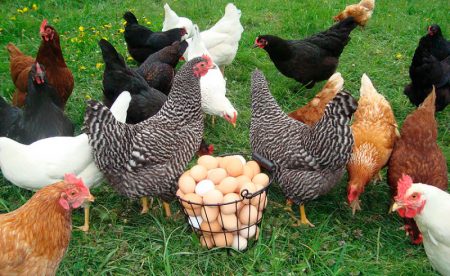
The main indicator for egg chickens is the number of eggs produced per year. On this side, the unequivocal leader is Leggorn. Chickens obtained from thoroughbred chickens will definitely give 330 eggs per year.
If you properly care for the bird, the egg production of the chicken will be even higher. Possible indicator of 365 eggs.
In Russia, the Leggors feel great because they are protected by strong feathers from the cold and wind. There is no terrain to which this attractive chicken would not adapt.
The most productive crosses:
- Broken Brown;
- Hayeks;
- Tetra;
- Isa Brown.
What breed is better not to get?
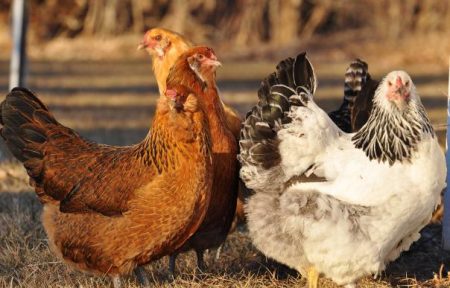
All the birds that the Russian market offers are capable of flying both on the farm and in the household. But the number of eggs received can be different, as well as the care of chickens. If you make a choice, it is better not to grow Minorok.
Adult individuals are quite egg-laying. They have a slender body, an elongated neck and a small head with a huge red scallop. Feathers can be black, white and brown. The eggs are distinguished by a dense white shell.
So why is it undesirable to grow such an egg breed in households? The fact is that she appeared in Spain and is very thermophilic. Such birds can still be kept in the south. But if you place it in the suburbs, not to mention the northern regions, it will begin to lay eggs much worse. During severe frosts, scallops may freeze at all. Even if the breed is provided with the necessary temperature, it needs a constant walk. Otherwise, it will not be productive.
Having examined the productive varieties of laying hens, we can conclude that you should buy chickens only from reliable producers. Only then can you be sure that the breed is an original breed, not a mixture.

